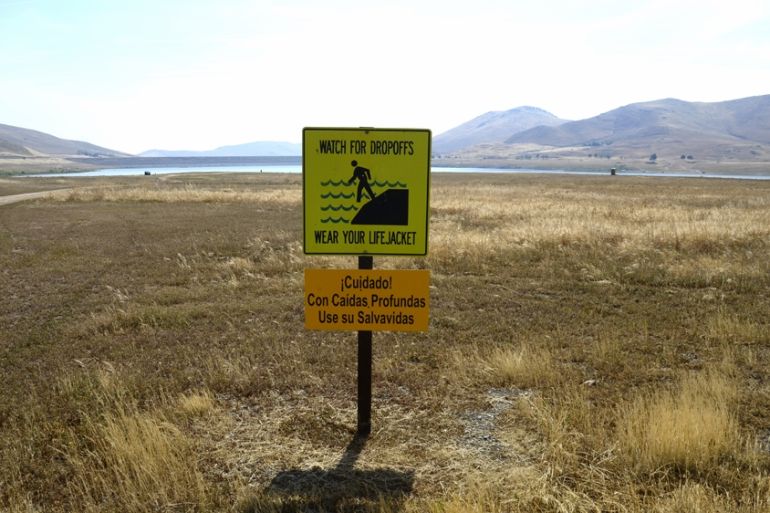California governor declares end to drought emergency
Up to 100 million trees died in one of driest periods in the state’s history.

One of the worst droughts in California history has officially ended, Governor Jerry Brown declared, but not before it strained the state’s farm economy and threatened water supplies for millions of residents.
Govenor Brown’s announcement on Friday covered the bulk of the state, leaving only the counties of Fresno, Kings, Tulare and Toulomne under restriction.
Keep reading
list of 4 itemsAsia bears biggest climate-change brunt amid extreme weather: WMO
Photos: Highest-level rainstorm warning issued in south China’s Guangdong
Europe endured record number of ‘extreme heat stress’ days in 2023
“This drought emergency is over, but the next drought could be around the corner,” Brown said in a statement. “Conservation must remain a way of life.”
The emergency declaration allowed the state to cut water usage. It is estimated that urban water consumption was reduced by up to 25 percent, as people were made aware of the need to treat water as a resource and to keep its use to a minimum.
Hosing down driveways and the watering of gardens during or immediately after rainfall were banned. At a municipal level, more permanent changes included stripping out lawns and replacing them with more drought-tolerant plants, and introducing more efficient sprinkler systems.
|
|
California’s consumption of water is dominated by agriculture. As much as 80 percent of water usage is directed into this multi-billion dollar sector of the economy. More than 400,000 hectares of land was taken up by almond trees. These trees required up to 3.8 trillion litres of water annually.
As a result of the drought, up to 100 million trees have died. Many cultivated trees have been uprooted as water for irrigation was restricted. Families in these rural areas have seen their wells dry up, forcing them to use bottled water and bathe from buckets.
The ending of the drought coincided with the annual snow survey which monitors the depth of the snow pack in the Sierra Nevada mountain range which supply up to 30 percent of California’s water.
The survey revealed that the snowpack was back up to 97 percent of the historical average.
Many computer simulations of climate change show the long-tern availability of water across the western US to be more erratic in the future, as rainfall patterns become more erratic.
The conservation of water is likely to remain an issue for the state, despite the lifting of the current emergency.